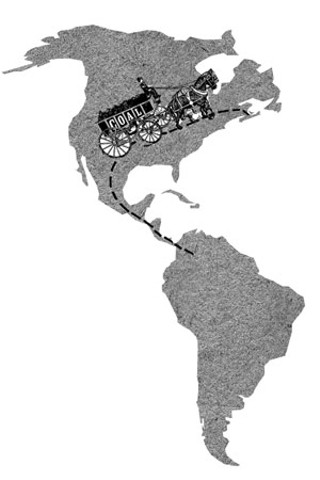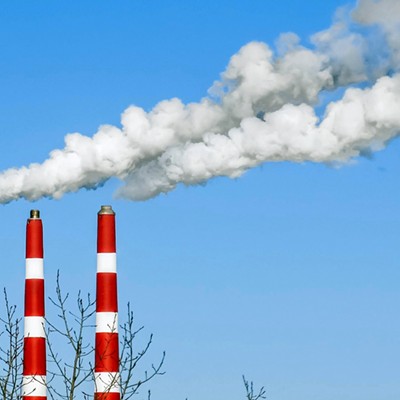For a Nova Scotia coal miner, if the mine doesn't get you, the coal dust will. Back in the day, at least the unions were strong and after many hard-fought, occasionally bloody battles with Devco (the crown corporation that used to run the coal mines), a coal miner could earn a decent living.
Devco, on the other hand, struggled in the face of increasing labour and shipping costs for its bulky bread and butter. As environmental awareness climbed toward its recent zenith, coal's lung-cuttingly high sulfur content, the millions of tonnes of solid waste it gave us for Christmas each year and the dangerous chemicals it leached into our water, made it passe with provincial legislators, who demanded reduced emissions.
In 1998, crippled by more than a billion dollars in debt, Devco was privatized and the bell tolled for Nova Scotian coal. Now, 10 years later, we're still addicted to the coal junk.
The 3.3 million tonnes of coal we burn each year provides more than 70 percent of our juice. The difference is that the vast majority of our coal now comes from foreign mines, mainly in Colombia (41 percent this year) and the United States (36 percent this year, mostly from Pennsylvania).
On average, US coal and particularly Colombian coal have much lower sulfur content than the local stuff. "There is no way we could meet local emissions standards with local coal," says Margaret Murphy, Nova Scotia Power's spokeswoman.
It is this low-sulfur Colombian coal that some have dubbed "blood coal." From their perspective, we're exporting the old environmental and human costs of coal mining in exchange for lower labour costs down south. Rachel Brighton, editor of the Nova Scotia Policy Review, published an editorial about Nova Scotia's Colombian coal imports in June. "I wondered every time I switched on a light, am I inflicting harm on Colombians?" she explains.
All of the approximately 1.4 million tonnes of coal we imported from Colombia last year came from one infamous mine in the northwest: Cerrejon. It is the largest open pit mine in the world and it is owned by three mining giants: BHP Billiton, Anglo American and Xstrata.
Cerrejon is also the only supplier Nova Scotia Power will reveal by name. Murphy says that if the names of its suppliers were public "it would hurt our negotiating position." Cerrejon is the exception because activists have already made NSP's link to the mine very public.
According to Chris Arsenault, a Phil Lind Fellow at UBC who visited the mine as a journalist, Cerrejon has a 20-year history of violently displacing indigenous and Afro-Colombian farming communities, including Manantial, Caracoli and, most notoriously, Tabaco. Arsenault has written that "the village of Tabaco, a sustainable farming community populated primarily by Afro-Colombians, was destroyed by Cerrejon's bulldozers in 2001 to make way for more coal exports."
Colombian farmers, Arsenault reports, blame Canadian power companies for fueling unaccountable violence in their homeland. He says mine officials admit to employing "private vigilantes" to secure the mine.
Since about the time Nova Scotia's coal industry wheezed its last silicosis-infused cough, the annual production at Cerrejon has almost doubled, necessitating the acquisition of new farmland from old villages. The mine continues to grow to meet the needs of a western world that can't kick its habit, and the villages of nearby Roche, Pantilla, Chancleta and Tamaquito are up next.
Given how the land acquisition went down in Tabaco, that's bad news for the indigenous Wayuu and the Afro-Colombian peoples of those villages. According to a report by Atlantic Regional Solidarity Network, the village "disappeared in August 2001 when its residents were forcibly displaced, its church and other buildings razed to the ground and the land incorporated into the mine."
Arsenault calls the forced removal of people with generations of connection to the land "the worst kind of public policy. There were 700 people living sustainably in Tabaco for generations, living and working the land. Now they are living with other families in one-room shacks on the outskirts of the nearby cities selling gum and cell-phone cards."
Murphy defends her company's choice of suppliers on many fronts, explaining that NSP carefully reviews mining practices. Although their main purchasing critera are sulfur content, heating quality and price, Murphy says labour standards are also important.
"Suppliers are scrutinized for compliance with international industry standards for environment, labour and safety," she tells me. She adds that the owners of Cerrejon are ISO 14001 certified, meaning they undergo independent reviews on their environmental practices. "We meet with our suppliers several times per year and typically visit their mines once per year. They are as good or better than Canadian standards, they have unions in place and negotiate with miners and the treatment of workers and families is also a factor."












